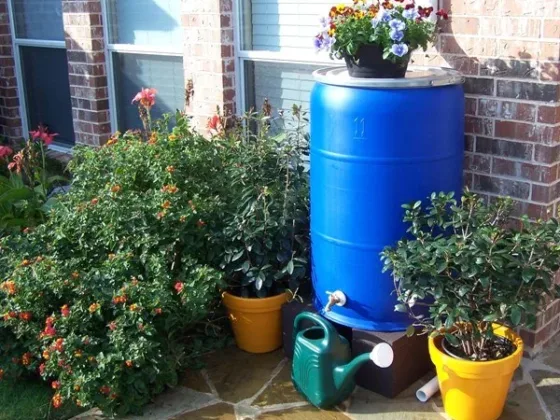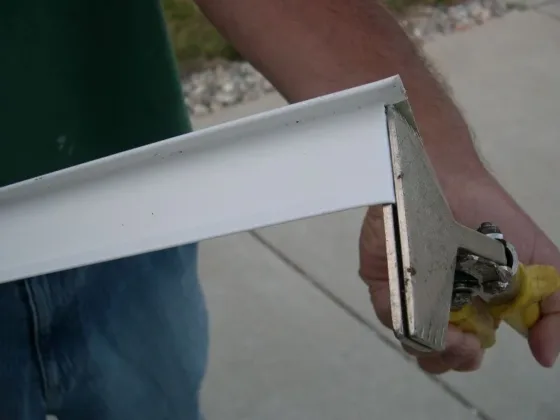Create your own water storage system and legally use a hose or an automatic irrigation system to water garden plants and vegetables during a hosepipe ban.
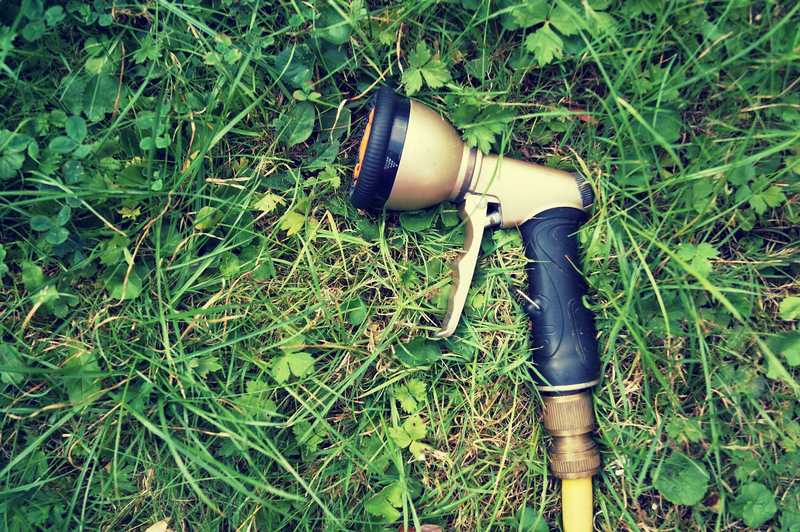
How to Keep Watering the Garden With a Hose During Hosepipe Bans
Drought and a hosepipe ban can cause havoc in a garden. Container-grown plants, shallow-rooting vegetable crops, and bedding plants are particularly vulnerable, but in a period of severe drought, even long-established trees and shrubs may be lost unless watered.
Watering plants with a watering can help, but is very time-consuming and generally impractical in a medium or large garden or for more than a handful of plants.
However, according to water board guidelines in Great Britain, it can be legal to use a drip-feed watering system directly from the mains.
They also confirm that if you install a system of water butts or tanks supplied by rain or wastewater you can use a garden hose or even a pump-powered automatic garden irrigation system.
Note. Different rules may apply during hosepipe bans in the US and other countries, so it’s necessary to check with your local board.
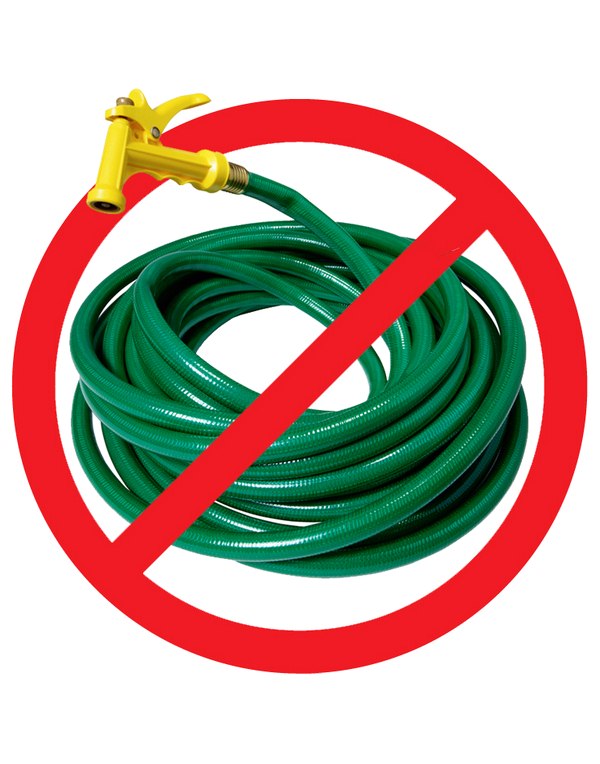
Read Also:
How Much Water a Garden Needs
The amount of water needed to maintain a garden is affected by many factors from the design of the garden to the weather and season.
Only experience can tell how much water you need, and how often, but a few figures will help to give a general idea:
- A standard half-inch (13mm) hose will use 180 -200 gallons (8-900 litres) of water per hour.
- A patio irrigation kit with 12 drippers will use 5-10 gallons (25-45 litres) of water an hour.
- A potted plant or hanging basket will need up to 1-2 gallons (5-10 litres) depending on the season, weather and size of the container.
- To give a square yard or meter of soil a soaking equal to one inch (25mm) of rainfall requires about 5 gallons (25 litres) of water.
Rain and Waste Water Collection
When mains water supplies cannot be used because of a ban on hoses, considerable quantities can still be available from two other sources:
Rain Water
Even in the driest parts of the United Kingdom, the roof of an average 3-bedroom house will yield over 26000 litres of rainfall in the average year, and even an 8×6 shed or greenhouse 2200 litres.
Recycled Shower or Bath Water
Water diverted directly from a bath or shower is perfectly safe to use provided the drainpipe is completely isolated from your main drainage.
Since the average shower uses around 20 gallons (80 litres) of water and a bath slightly more, the average household could easily generate enough waste bath water to run a hose for almost an hour a day.
Note
Most other “grey” water from washing machines and dishwashers is likely to be heavily contaminated with detergents, and any attempt to divert water from your main household drainage system would be a dangerous contravention of regulations related to Health and Safety and sewage.
Garden Water Storage Systems
Even in times of drought, for gardeners with an adequate water storage capacity, there’s, therefore, plenty of water available without infringing any hosepipe ban, but you need to create as much storage as space and your budget permit.
You may choose to capture and store the water in:
Garden Water Butts and Barrels
Water butts are the first choice for most gardeners and can easily be positioned in a spot convenient for collecting water.
A wide selection is available from garden centres and internet suppliers and there are many different types of water butts of all shapes and sizes.
The most common are butts of about 220 litres or 50 gallons, which is the smallest really worthwhile size.
However one of these will only supply a standard garden hose for 15-20 minutes, but if space is a problem you can increase capacity with linking kits which connect two or more butts together.
Pre-fabricated Water Tanks
These will generally offer more capacity. Harcostar and one or two other companies sell purpose-built 700L tanks, ideal for garden use, but if space is no problem, specialist suppliers offer tanks which hold several thousand litres of water.
Purpose-Built Water Tanks
A purpose-built tank is ideal for those who want to take water recycling seriously. You can create as much capacity as you like, and tailor it to fit your garden, for example by burying it under a patio or lawn.
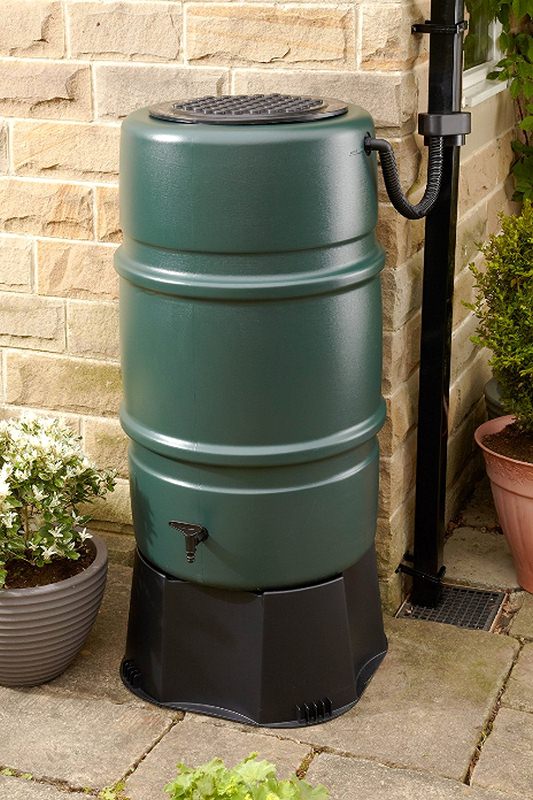
Sitting Garden Water Butts or Tanks
Siting your storage containers will usually involve a compromise between placing them as close as possible to the source of supply (eg a rainwater downpipe) and wherein the garden the water is most needed.
Wherever you can, raise the containers as high as possible.
The greater the height, the greater the head of water to supply a hose. At the very least the outlet and tap must be high enough to fit a watering can underneath.
The Garden Watering System
Two options for watering the garden from your storage supply are available:
A Simple Garden Hose Supply
If your water butt or tank is high enough to give an adequate head of water you can simply connect an ordinary garden hose to the outlet to lead the water wherever you need it in the garden.
If necessary install a low-pressure electric pump to push the water through the hose. A number of relatively inexpensive pumps are available from garden retailers or on the Internet.
A Pressure Fed Irrigation System
To operate a hose with a spray head, sprinkler or drip feed system, a high-pressure pump will be needed. Again, there are a number of these available, although they are rather more expensive.
However, such systems are well worth considering as they can be tailored to provide the ideal amount of water to different plants with a minimum of waste.
Minimizing Wasted Water
However much storage capacity you create, and whichever garden watering system you choose, it’s vital to minimize waste and water loss.
When installing a system, it’s always wise to consider what water-saving measures you can adapt to get the best possible results, from picking the ideal irrigation system and choosing the best timing to simple techniques like mulching.
Conclusion
A hosepipe ban need not prevent you from giving your garden plants all the water they need. By capturing any available rainwater and recycling the water from showers and baths you can supply a hose or even a full irrigation system.
